The round toe is a fun sock-knitting technique that gives a soft shape much like the crown of a hat–but for your feet, instead. Come explore how to work this sock toe in both directions. We’ll also look at ways to make your sock knitting experience go a bit more smoothly.
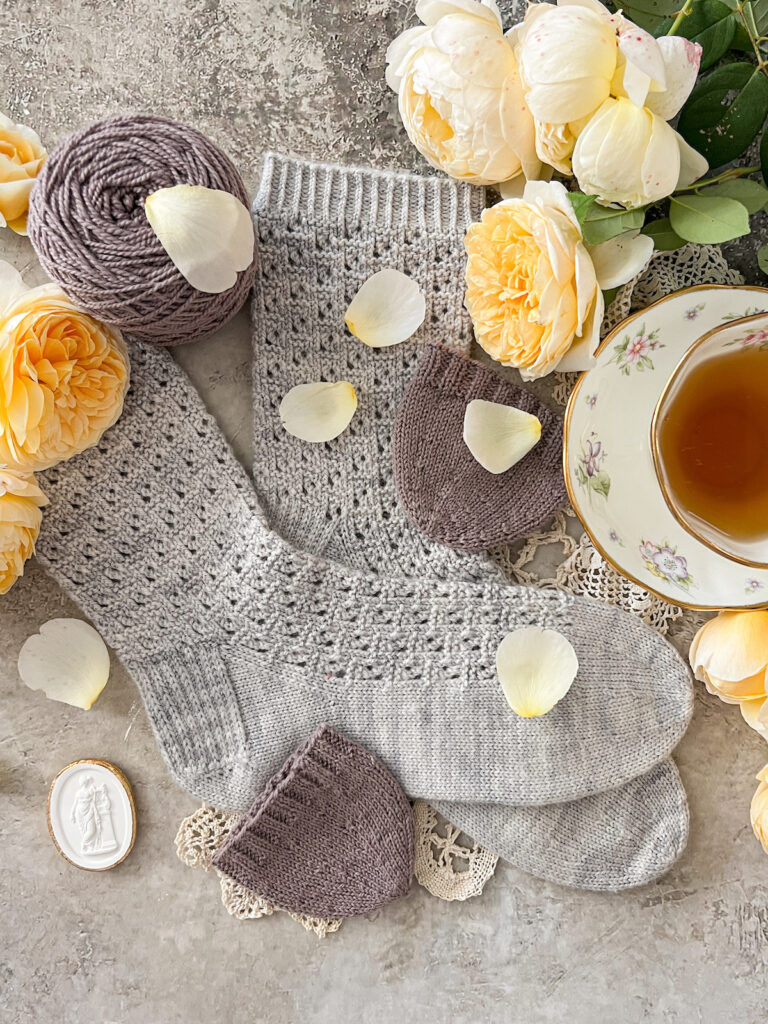
These instructions are meant to be needle-agnostic. By that, I mean it doesn’t matter whether you prefer to knit traditional socks with DPNs or like to work two-at-a-time using the magic loop method or tend to fly along with tiny 9″ circular needles, like I do. These instructions will still work for you.
How to Knit the Round Toe: Cuff Down Method
To work the round toe on a cuff-down sock, work the sock foot until you are about 2-3″ inches (5-7.5 cm) from the total desired length of the foot. The larger your sock circumference is, the longer the toe will be. Then, divide your sock into eight equal sections. If the number of stitches on your needles is not evenly divisible by eight, you should first work a decrease round. Decrease at even intervals until you are down to a number of stitches that does divide evenly by eight.
These instructions will be written so that you can work them for several different sizes of socks. Simply join in at the stage in the instructions where the number of stitches at the beginning of the round matches the total stitch count on your needles.
- With 88 stitches on your needles, *k9, k2tog; repeat from * to end of round.
- Knit one round in stockinette stitch.
- With 80 stitches on your needles, *k8, k2tog; repeat from * to end of round.
- Knit four rounds in stockinette.
- With 72 stitches on your needles, *k7, k2tog; repeat from * to end of round.
- Knit four rounds in stockinette.
- With 64 stitches on your needles, *k6, k2tog; repeat from * to end of round.
- Knit four rounds in stockinette.
- With 56 stitches on your needles, *k5, k2tog; repeat from * to end of round.
- Knit four rounds in stockinette.
- With 48 stitches on your needles, *k4, k2tog; repeat from * to end of round.
- Knit four rounds in stockinette.
- With 40 stitches on your needles, *k3, k2tog; repeat from * to end of round.
- Knit three rounds in stockinette.
- With 32 stitches on your needles, *k2, k2tog; repeat from * to end of round.
- Knit two rounds in stockinette.
- With 24 stitches on your needles, *k1, k2tog; repeat from * to end of round.
- Knit one round in stockinette.
- With 16 stitches on your needles, k2tog to end of round.
- With 8 stitches on your needles, k2tog to end of round.
- Break yarn and, using a tapestry needle, weave yarn tail through remaining stitches. Secure tail and weave in loose ends.
And that’s it! You’ve successfully worked a round toe.
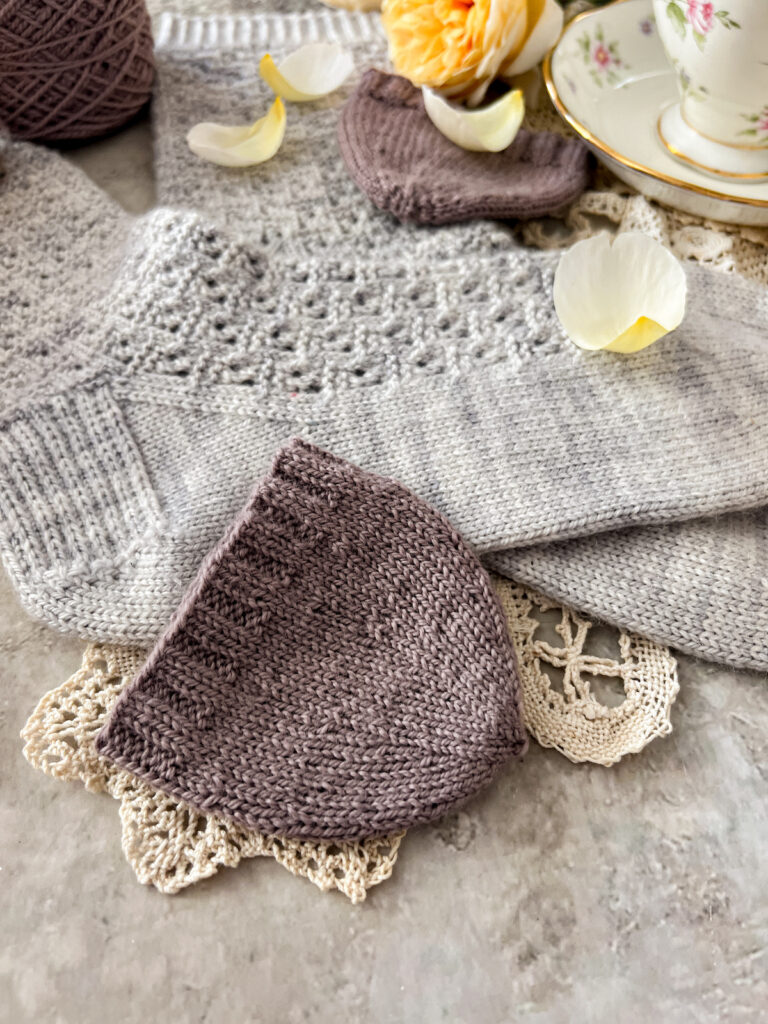
How to Knit the Round Toe: Toe Up Method
This toe method can also be used for making toe-up socks. Unlike the cuff-down style, where you are decreasing toward the end of the toe, you’re going to start with a very small number of stitches and increase outward.
At some point in this process, you may want to place a stitch marker to help you keep track of the beginning of each round. I usually add mine when I move from DPNs to tiny circular needles, right around step 10 or 12.
- Using the circular cast-on, cast on 4 stitches.
- KFB in each stitch to end of round.
- Knit to end of round.
- *KFB, k1; repeat from * to end of round.
- Knit two rounds in stockinette stitch
. - *KFB, k2; repeat from * to end of round.
- Knit three rounds in stockinette.
- *KFB, k3; repeat from * to end of round.
- Knit four rounds in stockinette.
- *KFB, k4; repeat from * to end of round.
- Knit four rounds in stockinette.
- *KFB, k5; repeat from * to end of round.
- Knit four rounds in stockinette.
- KFB, k6; repeat from * to end of round.
At this point, you’ll have 64 stitches on your needles. Many sock knitters like to knit a 64-stitch sock. If that’s you, you can stop increasing here and move on to the stitch pattern of your sock. On the other hand you need a larger circumference around the foot, keep increasing in the pattern as set out. You’ll add one more stitch between the KFB on each new increase round. Each increase round will add a total of 8 more stitches.
Likewise, if you need a smaller foot circumference, simply stop at one of the earlier increase rounds that has fewer stitches. Because you’ve reduced the number of rounds in your toe, your toe will be a little shorter, but one of the advantages of working toe-up sock toes is that you can easily adjust for that while knitting the rest of the sock foot.
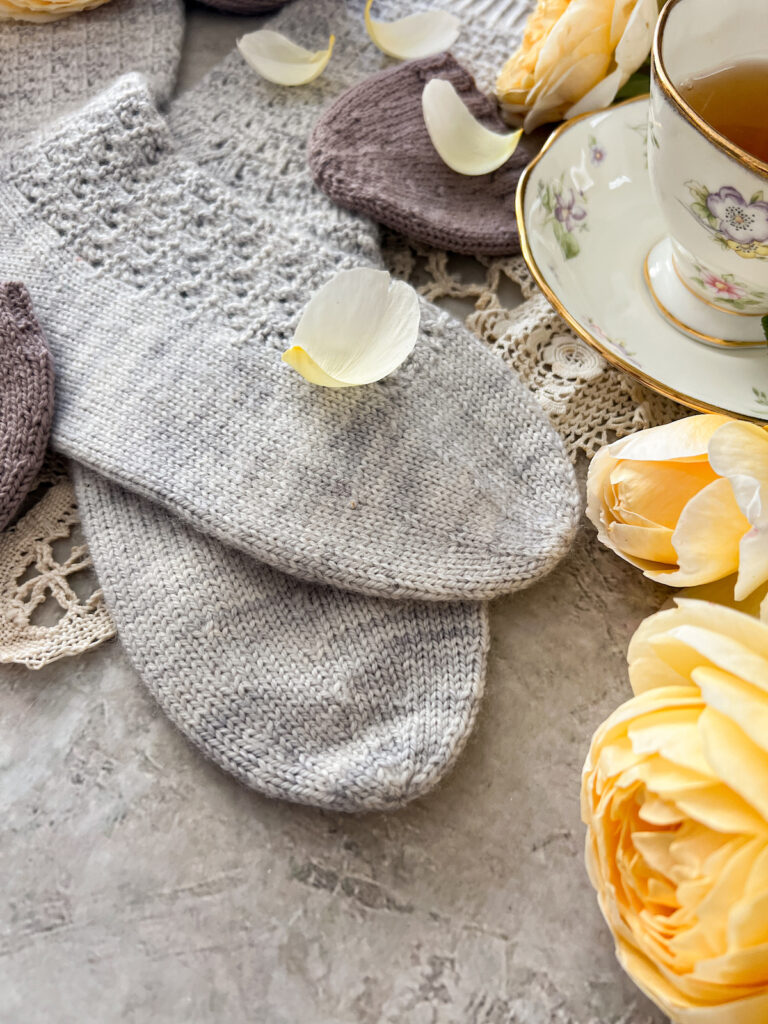
Why You Might Want to Use the Round Toe
The round toe, also called the rounded toe, is a popular sock toe for several different groups of knitters. Let’s explore some of the reasons it might be a good choice for you.
First, if you dislike grafting your stitches together (often called the kitchener stitch), the round toe has a huge advantage over the wedge toe: no grafting required. Some knitters don’t like the actual process of grafting, while others dislike the feeling of a grafted sock toe. Either way, this toe shape is an easy way to avoid that problem.
Many knitters also have toes where the middle toes are longer than the big toe. For those knitters, this kind of toe shaping might be more comfortable because it is longest at the spot where the middle toe sits on the foot. While the wedge toe is also longest at this point, it has a more abrupt ending than the gentle toe decreases of the round toe.
If you’re knitting your socks toe-up, you might also find this easier than working a wedge toe (full confession: when I started knitting toe-up socks, I never could get the hang of the Turkish cast-on, though Judy’s Magic cast-on wound up working great for me). Knitting this toe shape from the toe-up uses the circular cast-on, which might be easier for you.
Finally, knitters who like a roomier sock toe might appreciate the round toe. It’s a little more spaciously shaped than the wedge toe. The wedge toe, which is worked using symmetrical decreases at either side, has a relatively flat top and bottom. The round toe, in contrast, has decreases worked all the way around the sock, leading to a little more space along the top and bottom of the toe.
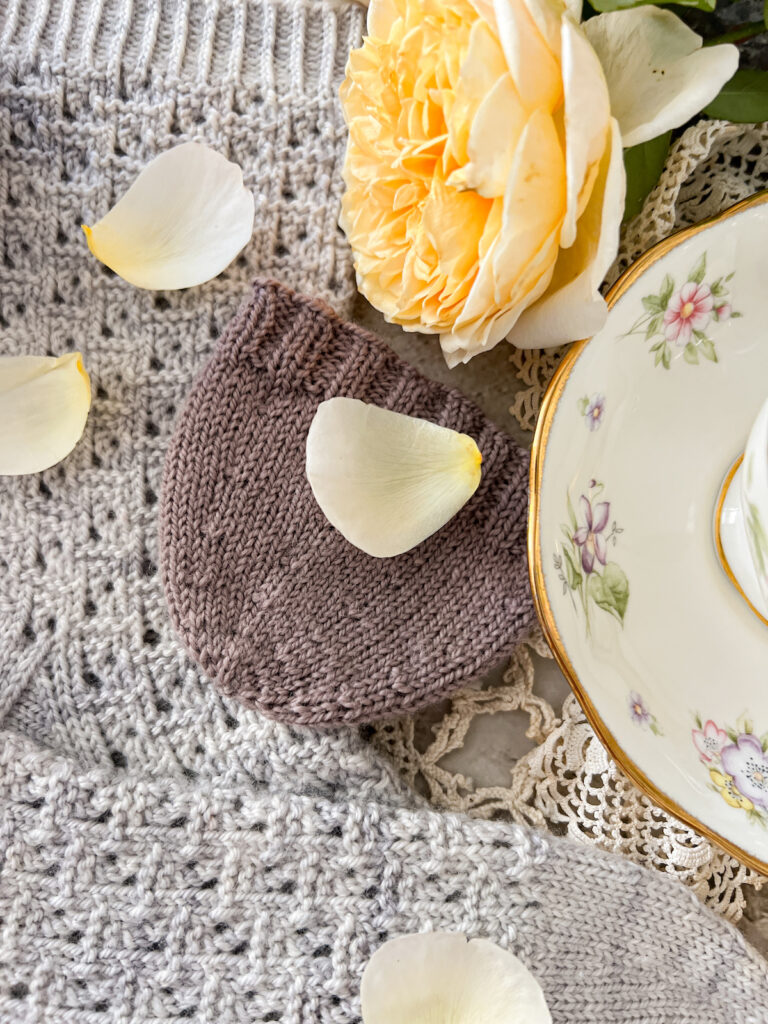
Some Tips to Make It Easier to Work the Round Toe
When working the round toe, it’s important to keep track of how many knit rounds you’ve worked between each of the decrease rounds. If you have trouble counting your work, it’s a good idea to have some other way to remember which round you’re on. I’m a big fan of the chain row counters from Twice Sheared Sheep (affiliate link – if you choose to buy something through this link, I’ll receive a small commission at no extra cost to you).
You’ll also be working with a very tiny circumference of stitches at some point in your sock toe. That means if you normally knit your socks with a 9″ circular needle, you’ll want something that can go down to a circumference of just 4 stitches.
If you’re working your sock from the toe up, it can sometimes be hard to keep track of the right side of the fabric and distinguish it from the wrong side. If you struggle with this, it can help to put a clip-style marker on the outside of the sock toe. There are a ton of cute options here (affiliate link – if you choose to buy something through this link, I’ll receive a small commission at no extra cost to you).
Working your sock from the toe up can also get a little fiddly on the first round. Take a deep breath and don’t be afraid to try again if things go sideways. Your biggest risk at this stage, especially if you’re working with DPNs, is that your needles might slide out of your stitches. If that happens, you might want to try a different set of needles. Here’s a blog post exploring tons of options.
Finally, remember that the round toe is a longer toe than the wedge toe. If you’re working your sock from the cuff down, make sure to start your toe a little earlier than your ordinarily would.
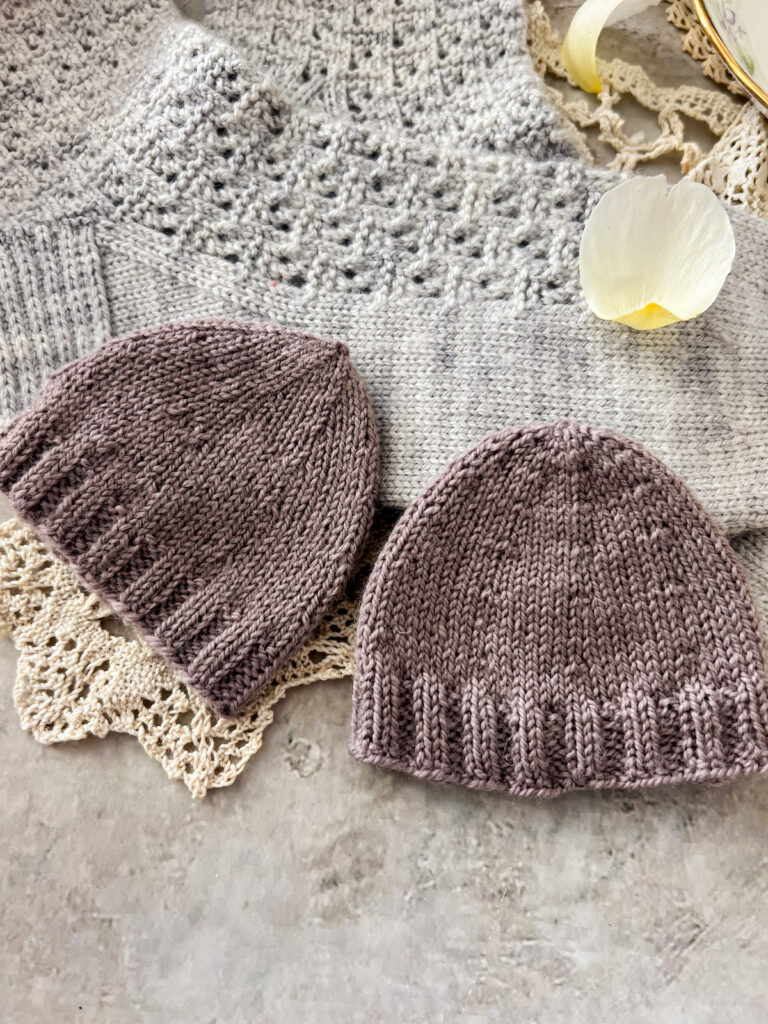
The Star Toe: A Fun Variation on the Round Toe
If you find that you enjoy knitting the round toe and like how it fits your toes, you might also enjoy working the star toe. The star toe uses fewer decreases/increases for each round and stacks them on top of each other to create a pretty spiraling effect from the tip of the toe outward.
Here’s a picture of what that looks like.
I’ll have a separate blog post for you soon with step by step instructions for how to work this toe.
Other Resources for Exploring Sock Toes
Choosing the right shape for your knit sock toe can make a real difference in comfort and fit. Depending on the shape of your unique feet, you might find that a shorter toe or a longer toe is better suited to your needs. Likewise, you might prefer a rounded shape (like the one explored in this blog post) or a flatter, wider wedge shape.
If you’d like to learn about other sock toe shapes, I’ve got a blog post exploring my three favorite sock toes that might be helpful to you.
Toe-up sock toes also have their own little tips and tricks. Here’s a blog post about a way I work my toe-up sock toes so I can better keep track of whether I’m on an increase round or not.
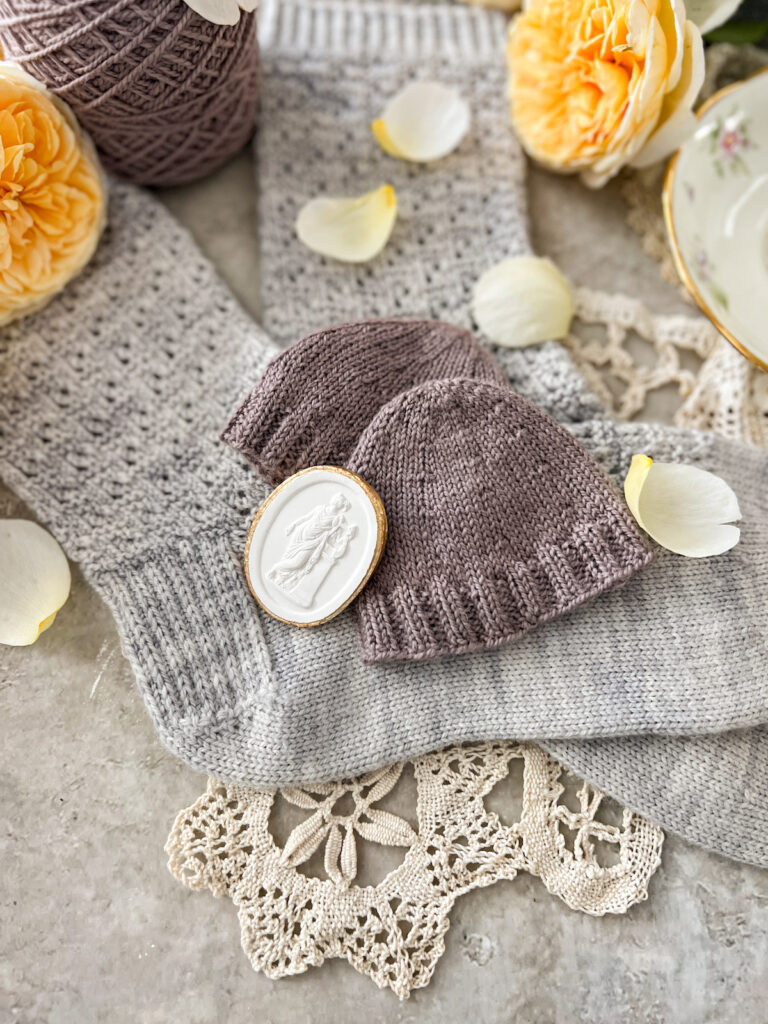
My Favorite Sock Knitting Tools
If you’re curious about some of my favorite sock knitting tools, here’s a round-up of the things I use most. These are affiliate links, which means if you choose to buy something through those links, I’ll receive a small commission at no extra cost to you. I will always identify affiliate links for you. Thanks for supporting my work!
The 9-inch circular needles I prefer for knitting socks
The DPNs I use for heels and toes
The chain row counter I love for heel flaps
The sock blockers I use for all my finished socks
The delicate stitch markers decorated with pastel glass pearls I love for sock knitting
Let’s stay connected!
Join my newsletter for 30% off all new releases, regular updates with helpful tips and tricks, first crack at registration for upcoming workshops, exclusive discounts, and more.
Prefer to read without ads? Join my Patreon, which starts at just $1 a month!
Join the A Bee In The Bonnet Facebook Group to participate in knitalongs and other fun community events
Come hang out with me on the A Bee In The Bonnet TikTok
Follow along on the A Bee In The Bonnet Instagram
Get inspired via the A Bee In The Bonnet Pinterest
Let’s stay connected!
Join my newsletter for 30% off all new releases, regular updates with helpful tips and tricks, first crack at registration for upcoming workshops, exclusive discounts, and more.
Prefer to read without ads? Join my Patreon, which starts at just $1 a month!
Join the A Bee In The Bonnet Facebook Group to participate in knitalongs and other fun community events
Come hang out with me on the A Bee In The Bonnet TikTok
Follow along on the A Bee In The Bonnet Instagram
Get inspired via the A Bee In The Bonnet Pinterest

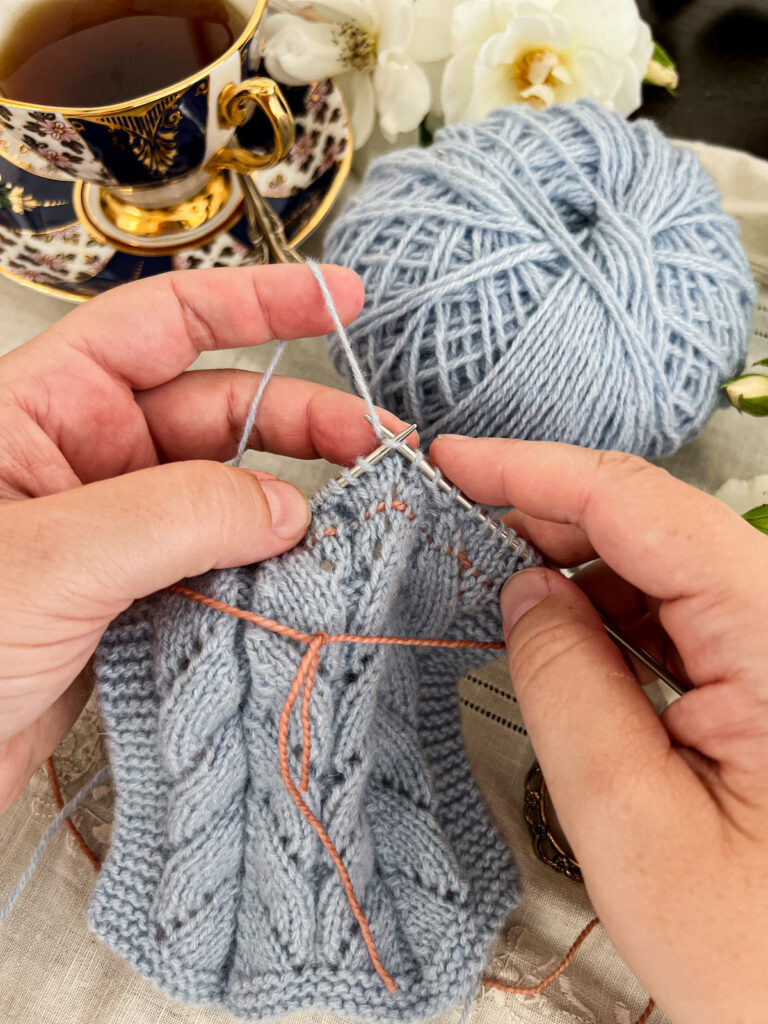
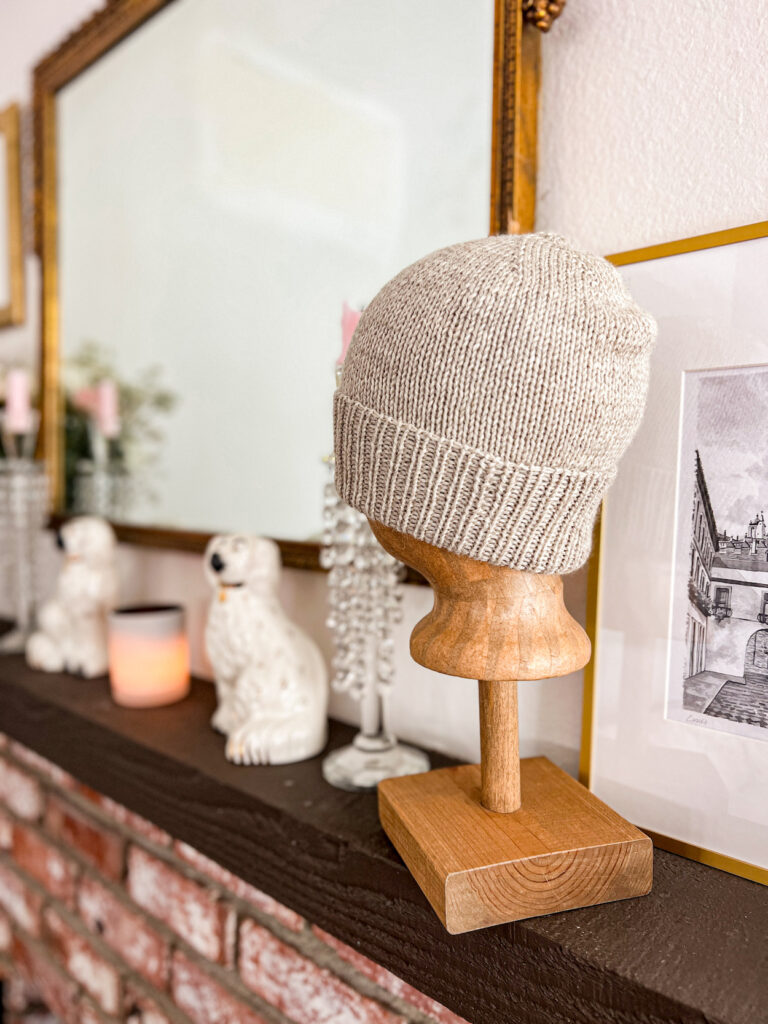
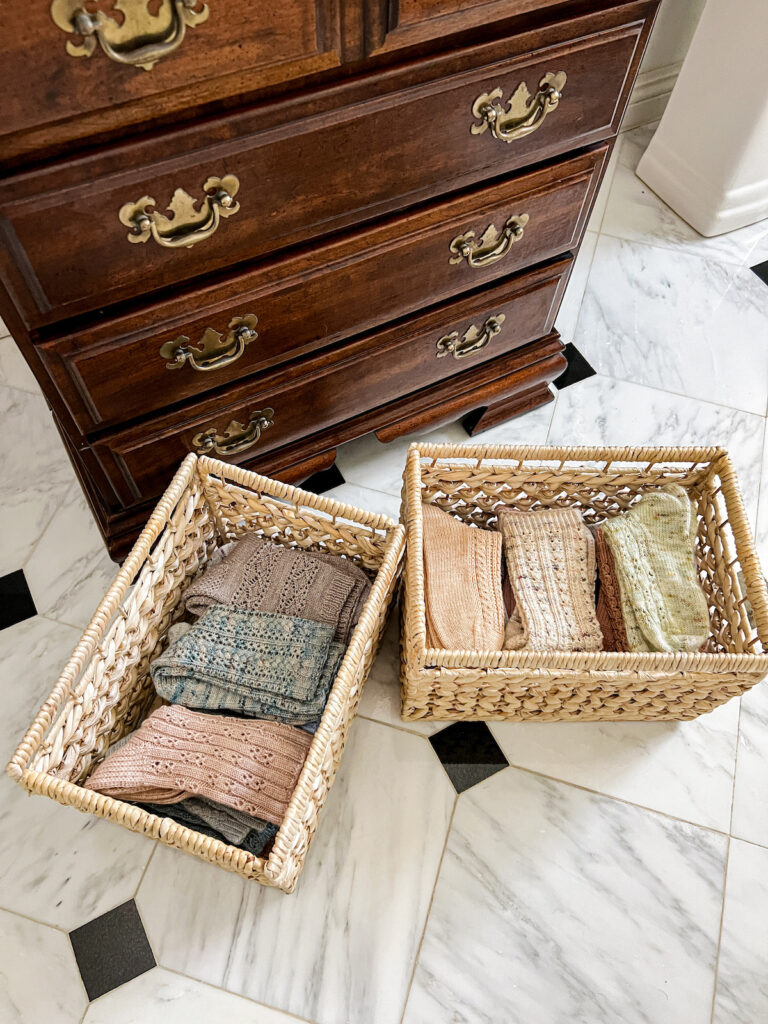
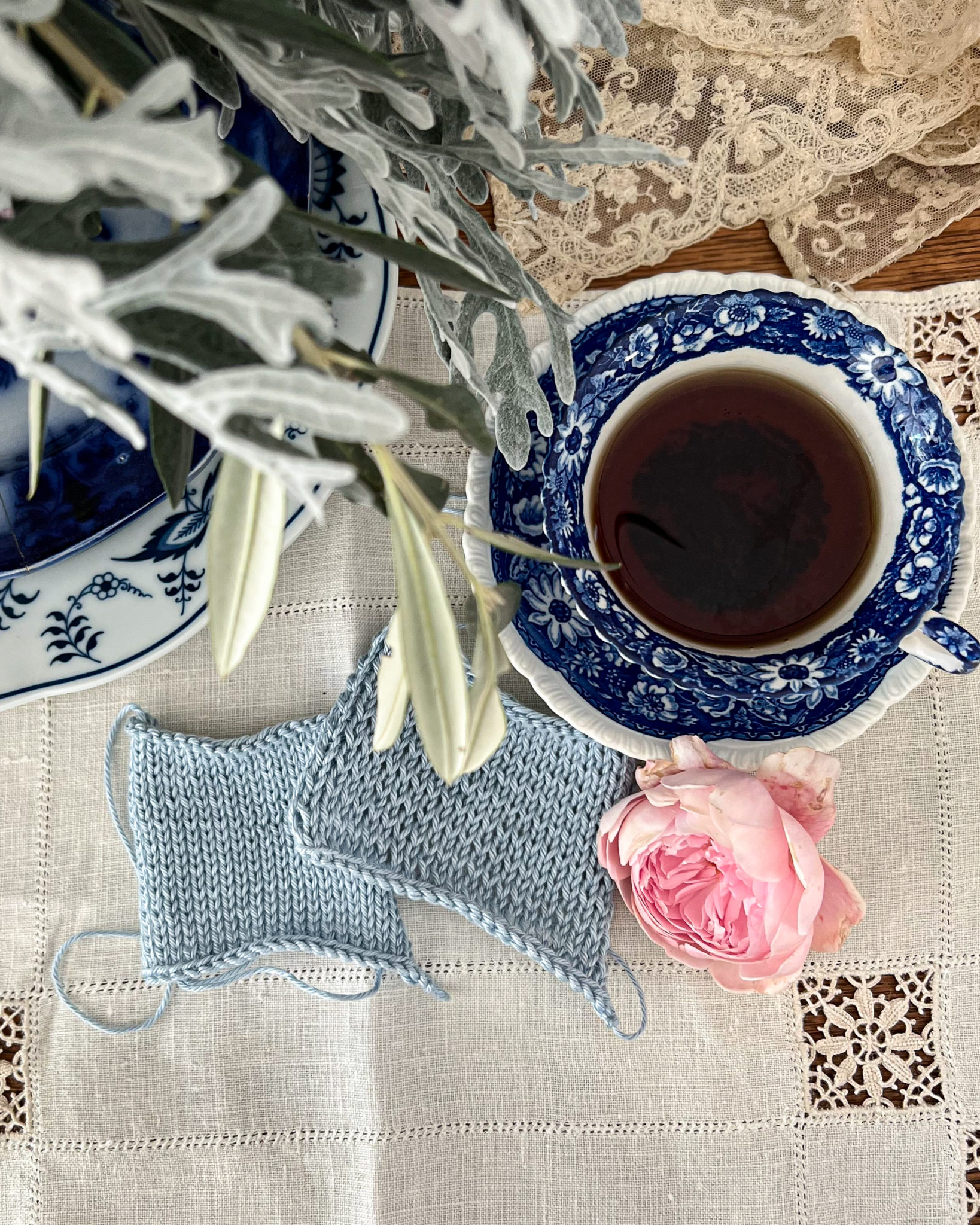
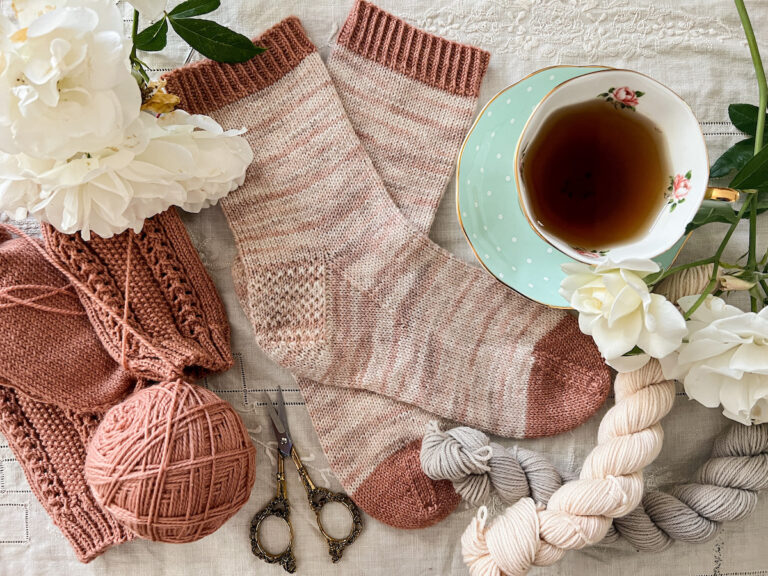
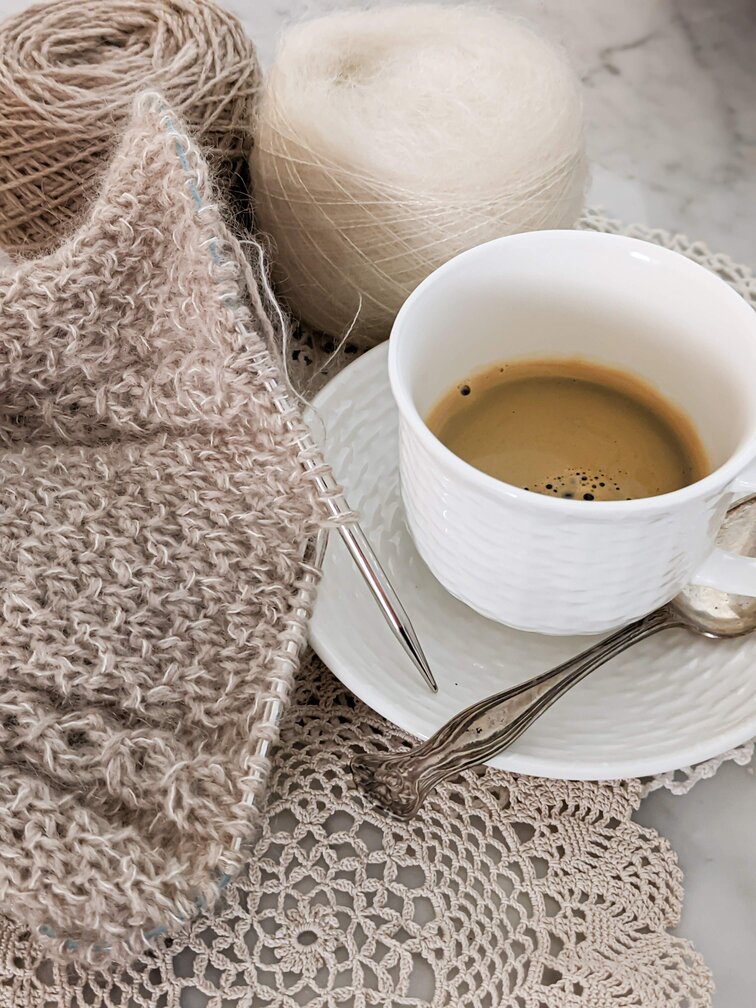
Thank you very much for this detailed explanation. I hadn’t realised that the round toe is a better fit for my shape of feet.
I’m glad it was helpful! Thanks for stopping by.
I have a slight variation that fits my weird feet. (The word “flippers” has been used.)
I do exactly what you do until I get down to 16 stitches, then I divide top and bottom, and then Kitchener.
This removes what is for me extra bulk at the toe.
The only time I tried a wedge toe I frogged it. Too tight.
Oh interesting, I like that strategy! This combines the best of both toe worlds.
What size needles do you use?
I use US size 1.5, but you should experiment with different needle sizes to find the one that’s right for your unique gauge. Every knitter is different.